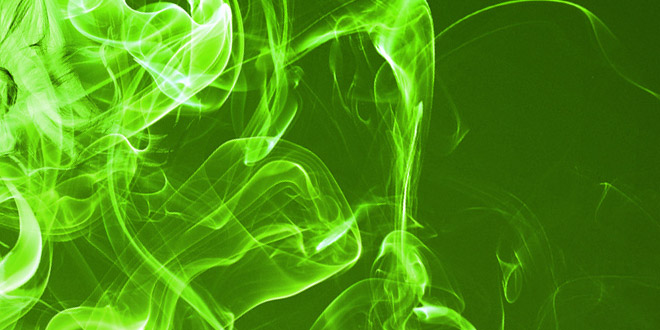Absinthe
Absinthe is a spirit with a chequered history, surrounded by misconceptions and propaganda. Fortunately we are now seeing its popularity grow, which is helping to shine a light on the spirit.
What is absinthe?
Originally produced as a medicine in the latter half of the 18th century, it became a popular aperitif and eventually an icon of France’s Belle Epoque. Unfortunately bad press and the rise of temperance early in the 20th century led to its almost universal banning across the world. The bans have now been overturned and the spirit is legally available again – the resurgence of absinthe in the UK and further afield is gaining pace.
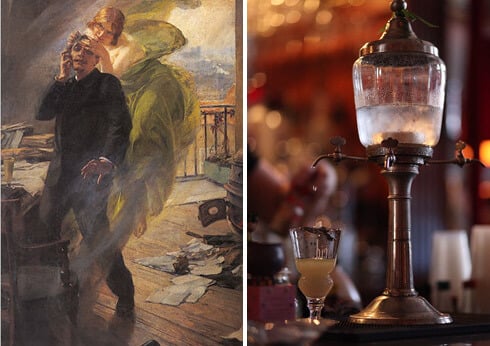 Absinthe was both feted and feared for its hallucinogenic properties, and was consumed by poets and artists in search of inspiration, as depicted in Albert Maignan’s 1895 painting, Green Muse / A traditional absinthe fountain. Photo by Autopilot (own work) via Wikimedia Commons [Licence]
Absinthe was both feted and feared for its hallucinogenic properties, and was consumed by poets and artists in search of inspiration, as depicted in Albert Maignan’s 1895 painting, Green Muse / A traditional absinthe fountain. Photo by Autopilot (own work) via Wikimedia Commons [Licence]
How absinthe is made
Absinthe is a distilled spirit flavoured with bitter wormwood and a variety of other botanicals, including sweet anis and fennel, as well as many others.
The two main types of absinthe are verte and blanche, green and clear. Immediately after distillation the spirit is clear and can be bottled as a blance; vertes are traditionally coloured green by infusing the spirit with more botanicals before bottling.
While there are many traditionally produced absinthes available, there are also a number of ‘compounded’ spirits on the market. These use artificial colour and flavourings to produce their spirits, and generally do not have the same depth of flavour.
Does absinthe make you hallucinate?
In theory, it could do, but in reality it is highly unlikely. The chemical in absinthe that can cause hallucinations is called thujone, a component in wormwood. However, the levels of thujone in absinthe are so low that it would take a huge quantity of absinthe to have any effect.
How to drink absinthe
Absinthe should not be drunk neat, and should always be diluted with chilled water – a ratio of one part absinthe to between three and five parts water is usual. Many traditions have arisen around the serving of absinthe, including the slow dripping of water on to a sugar cube sat on an absinthe spoon, which all add to the mystique of the spirit.
Purists prefer to use an absinthe fountain – an elaborate multi-tapped vessel that allows several absinthe drinkers to dilute their absinthe glass at the same time. There are also a number of popular absinthe cocktails, including the Sazerac, Death In The Afternoon and the Corpse Reviver.
Absinthe Spoons
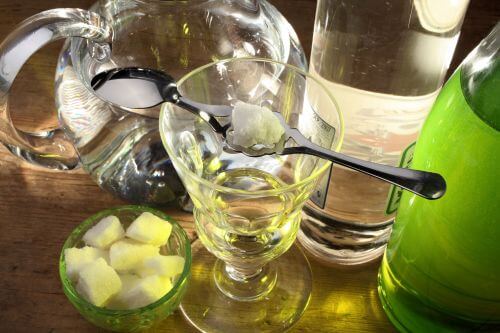
One of the most elegant artefacts in the drinks world, absinthe spoons are both beautiful to look at and serve a useful purpose. Having been placed over a glass of absinthe, the spoon is so designed to rest a sugar cube on its surface, which gradually dissolves and drips through the perforations once iced water has been carefully dripped over the top of it. The appearance of absinthe spoons can vary – some, for example, are shaped to resemble a wormwood leaf, while others bear beautifully intricate art-deco designs. The rarest are incredibly valuable, too, selling for hundreds, even thousands of pounds.
Typical Character and Style of Absinthe
-
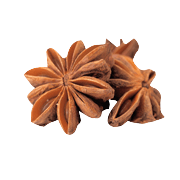 Anise (star)
Anise (star)
-
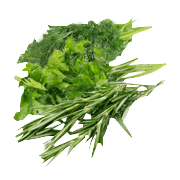 Mixed Herb
Mixed Herb
-
 Grass
Grass
Filter
Price Range
Brand
Country
Style
Flavour
Strength
Size
Colouring
Certification

Skooma Absinthe
$74.37
($106.24 per litre)

Pernod Absinthe
$49.56
($70.80 per litre)

Hapsburg Cassis Absinthe
$49.56
($99.12 per litre)

Hapsburg XC Original Absinthe
$49.02
($98.05 per litre)
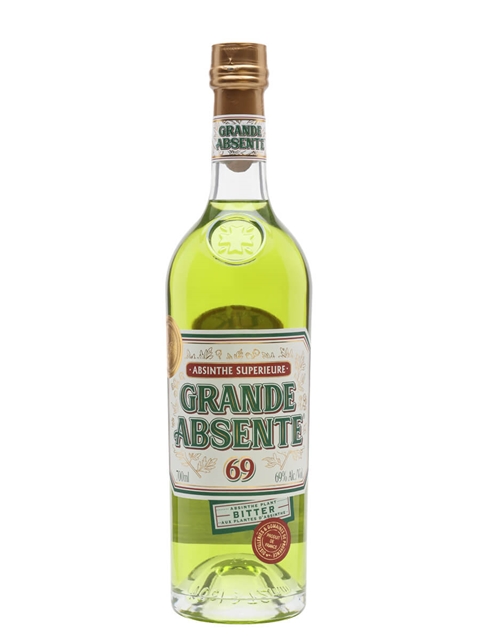
Grande Absente Absinthe Originale
$53.88
($76.97 per litre)

Sebor AbsintheHalf Litre
$33.71
($67.41 per litre)

La Fee Parisienne Absinthe
$53.12
($75.89 per litre)

Hendrick's Absinthe
$43.09
($61.56 per litre)

Tempus Fugit Vieux Pontarlier Absinthe
$60.35
($86.21 per litre)

Mr. Jekyll Absinthe
$31.01
($44.30 per litre)

Hapsburg Classic Absinthe
$36.62
($73.24 per litre)

Jade 1901 Absinthe
$80.84
($115.49 per litre)

Jade Nouvelle Orleans Absinthe Verte
$30.69
($15.34 per 10cl)

Jade Espirit Edouard Absinthe Verte
$30.69
($15.34 per 10cl)

Combier Blanchette Absinthe
$46.11
($65.87 per litre)

Devil's Botany Absinthe Regalis
$66.06
($94.38 per litre)

Bareksten Illsint Absint
$48.48
($96.97 per litre)

Jade Terminus Absinthe Oxygenee
$80.84
($115.49 per litre)

Absinthe Abysse
$32.30
($46.15 per litre)

Leopold Bros Absinthe Verte
$87.31
($116.42 per litre)

Jade 1901 Absinthe
$30.69
($15.34 per 10cl)

Jade Nouvelle Orleans Absinthe Verte
$80.84
($115.49 per litre)

La Maison Fontaine Blanche AbsintheSmall Bottle
$22.38
($11.19 per 10cl)

La Maison Fontaine Blanche Absinthe
$61.21
($87.44 per litre)


